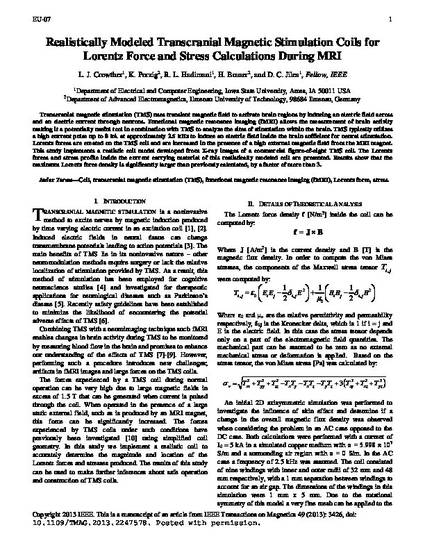
Transcranial magnetic stimulation (TMS) uses transient magnetic field to activate brain regions by inducing an electric field across and an electric current through neurons. Functional magnetic resonance imaging (fMRI) allows the measurement of brain activity making it a potentially useful tool in combination with TMS to analyze the sites of stimulation within the brain. TMS typically utilizes a high current pulse up to 8 kA at approximately 2.5 kHz to induce an electric field inside the brain sufficient for neural stimulation. Lorentz forces are created on the TMS coil and are increased in the presence of a high external magnetic field from the MRI magnet. This study implements a realistic coil model developed from X-ray images of a commercial figure-of-eight TMS coil. The Lorentz forces and stress profile inside the current carrying material of this realistically modeled coil are presented. Results show that the maximum Lorentz force density is significantly larger than previously calculated, by a factor of more than 3.
Available at: http://works.bepress.com/rlhadimani/20/

Copyright 2013 IEEE. This is a manuscript of an article from IEEE Transactions on Magnetics 49 (2013): 3426, doi: 10.1109/TMAG.2013.2247578. Posted with permission.